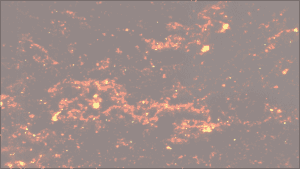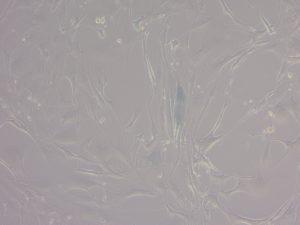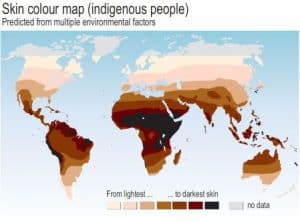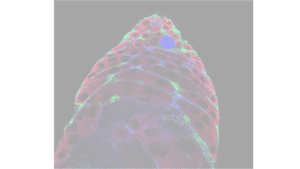We are the memory of our past. The memory, our memories, shape our identity as individuals.
But memory is so much more. Without it, we would not survive as species, without memory we would not be the species that we are. Because we remember we can learn, and in the wild that equals to survive. Because we remember we can teach, we can evolve. Because we remember, humankind is a kind beyond the animal world.
But, why do we remember? The answer is simple, because our brain is made for it. The process of how we remember, that is not that simple: and yet, we have a lot to learn. What we do know is that the brain is quite similar to a muscle. When a muscle is trained, meaning, the same movement is repeated over and over, it gets stronger. In that way, with a lesser effort, the muscle will be able to make that movement. The brain is somehow similar. When we study or we memorize something we repeat over and over the same concept (stimulus). For example, an image or a piece of data. Repeating the stimulus will strength specific neurons. Those neurons will get sensitized, and therefore, with a lower stimulus those neurons (but no other) will be activated. The way in which those neurons are going to store, to “memorize” the new piece of information we are just learning is through changes at the cellular level.
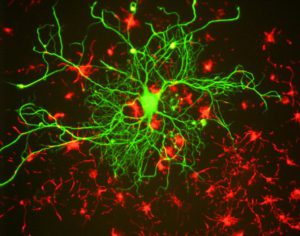
Hippocampal Neuron
Now comes the interesting part. We all have heard than different groups of neurons get specialized in the processing of different stimulus, for example: colour, smell, sound. In that way, the information (that will be our future memory) is fragmented in pieces (colour, smell, sound) that will be stored by different groups of neurons. Because those neurons got sensitized and can be activated by a lower stimulus (due to the “memorizing” training), the communication among them is more efficient. This will allow to rebuild a full memory from its parts. For example, who hadn’t a vivid memory rescued by a familiar smell?: the vanilla smell reminds me of my grandmother´s kitchen during a winter day. The vanilla smell is the memento that triggers the memory: a winter day in my grandma´s kitchen. This is so, because the subgroup of neurons storing a piece of the memory (vanilla smell) have the ability to activate the rest of the neurons that are part of that memory (the image of a winter day in my grandma kitchen).
My research is focus on the cellular changes that make possible the neuronal strengthening and therefore, underlies the memory process. In the lab we can mimic the stimulus that activates the neurons, in way similar to how it works in the brain. When these stimulus activate a neuron, the neuron will release neurotransmitters. These neurotransmitters are the chemical signal that allows neurons to communicate, to coordinate and to activate or deactivate other neurons, and therefore, to respond to the stimulus. When the neurotransmitters released by the first neuron (neuron A) reach the next neuron (neuron B), they will bind specific receptors in the cell membrane of that neuron (B). The activation of this receptors will trigger intracellular signals to switch on/off the neuron B. If we repeat the same process several times, the neuron B will get “sensitized”: now the threshold for the stimulus to activate the neuron B is lower. The repeated stimulus strengthen the communication between the neurons A and B, increasing the reaction capacity for the neuron B, which is more responsive to the neuron A´s signals, hence it is more responsive to the initial stimulus. And this is the cellular basis for learning and memory.
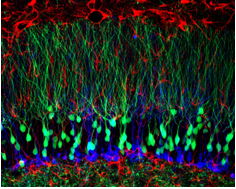
Neuronal Network
Our study is focus on a group of receptors called Kainate receptors, and how these process the information (stimulus) triggering cellular changes that underlie the memory and learning process. The kainate receptors are known since 1953, and to date, it was believed that their role in memory processing were secondary. This means that their activation would modulate the memory process but would not initiate it. However, we have described for the first time a direct role, in other words, how their activation triggers the cellular changes underlying memory and learning (http://rdcu.be/pdPu).
We do know how those cellular changes develop, but we do not know when or why. For example, the type of memory that depends on Kainate receptors activation, could be relevant during specific stages in life. Although learning and memory are a constant process along life, there are differences in the different periods of life: the period of maximum learning occurs at between birth and puberty. On the other hand, there is a normal decrease in the learning capacity associated to aging and a pathological decrease associated to diseases such as dementia or Alzheimer. Now we know that during different periods in life one type of memory (classified according to the type or neurotransmitter receptor triggering the activation of the cellular changes) is predominant over the rest. But we don’t know why or which are the differences in the different types of memory.
Also, we don’t know why the memory process triggered by kainate receptor coexist with other memory processes. Meaning, in the same neuron several pathways can be activated (driven by different receptors) and those pathways will converge in the same point (memory processing), why? Does it mean that the different pathways reflects different stimulus? The answer: We have a lot to learn. And to quote metallica, “but the memory remains!”-
By Dr Inmaculada González González, Lecturer at the School of Pharmacy and Biomedical Sciences, University of Central Lancashire, Preston. SRUK Northwest Constituency.
More info:
https://www.uclan.ac.uk/news/ground-breaking-research-points-to-new-treatment-for-Alzheimers.php

